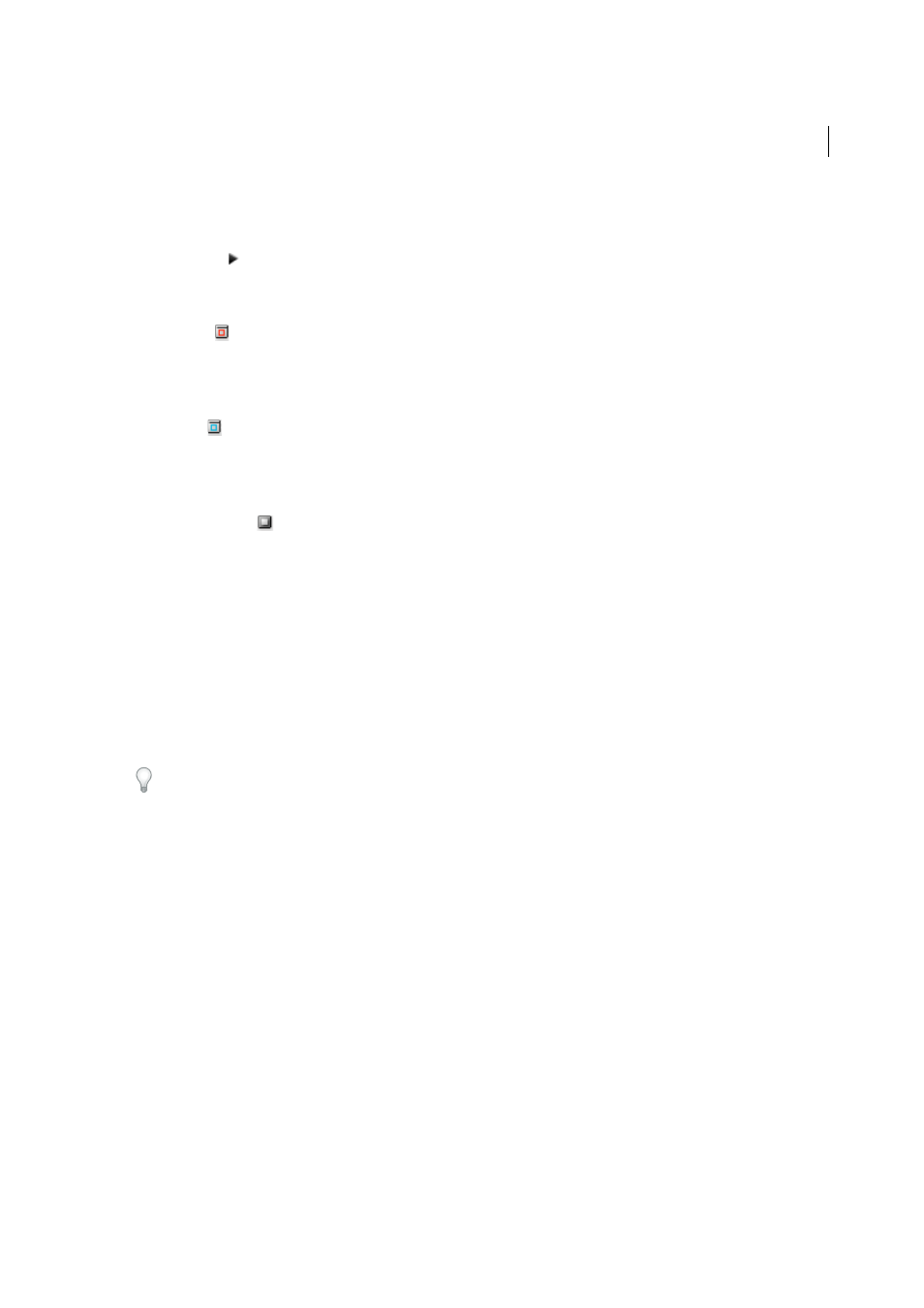Using the status bar, Control panel overview – Adobe InDesign CC 2015 User Manual
Page 55

50
Workspace and workflow
Last updated 6/6/2015
Displays artwork in a standard window with all visible grids and guides showing, non-printing objects showing, and a
white pasteboard.
Preview Mode
Displays artwork as if it were output, with all non-printing elements suppressed (grids, guides, non-printing objects),
and the pasteboard set to the preview background color defined in Preferences.
Bleed Mode
Displays artwork as if it were output, with all non-printing elements suppressed (grids, guides, non-printing objects),
the pasteboard set to the preview background color defined in Preferences, and any printing elements within the
document's bleed area (defined in Document Setup) showing.
Slug Mode
Displays artwork as if it were output, with all non-printing elements suppressed (grids, guides, non-printing objects),
the pasteboard set to the preview background color defined in Preferences, and any printing elements within the
document's slug area (defined inDocument Setup) showing.
Presentation Mode
Displays artwork as if it were a slideshow presentation, with no menus, panels, or tools displayed. See
.
Using the status bar
The status bar (at the lower left of a document window) shows information about the status of a file and lets you turn
to a different page. Click the status bar menu to do any of the following:
• Show the current file in the file system by choosing Reveal In Explorer (Windows®) or Reveal In Finder (Mac OS®).
• Show the current file in Adobe® Bridge® by choosing Reveal in Bridge.
• Show the current file in Adobe Mini Bridge by choosing Reveal in Mini Bridge.
In Mac OS, you can display the zoom percentage in the status bar by hiding the application bar (Window > Application
Bar). In Windows, you cannot hide the application bar.
Control panel overview
The Control panel (Window > Control) offers quick access to options, commands, and other panels related to the
current page item or objects you select. By default, the Control panel is docked to the top of the document window;
however, you can dock it to the bottom of the window, convert it to a floating panel, or hide it altogether.
Options displayed in the Control panel vary depending on the type of object you select:
• When you select a frame, the Control panel displays options for resizing, repositioning, skewing, and rotating the
frame, or applying an object style.
• When you select text inside a frame, the Control panel displays either character or paragraph options. Click the
paragraph and character icons on the left side of the Control panel to determine whether paragraph or character
options are displayed. If your monitor size and resolution allows, the Control panel displays additional options. For
example, if the character icon is selected, all the character options are displayed, and some paragraph options appear
on the right of the Control panel. If you click the paragraph icon, all paragraph options are displayed, and some
character options appear on the right.
• When you select a table cell, the Control panel displays options for adjusting row and column dimensions, merging
cells, aligning text, and adding strokes.
